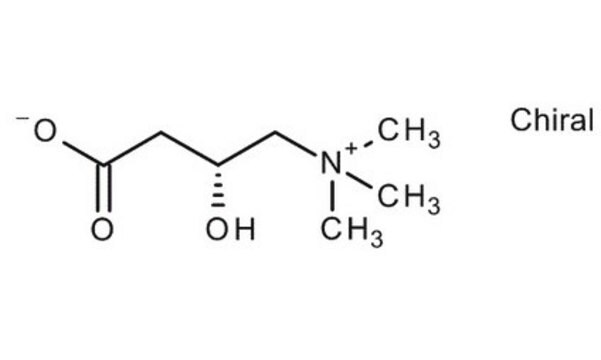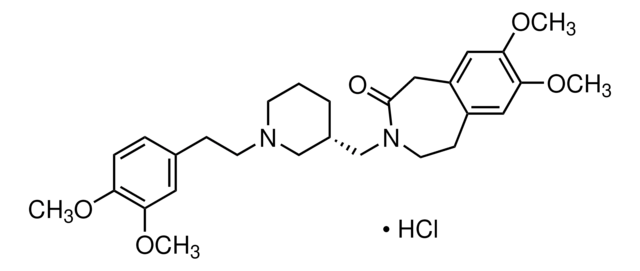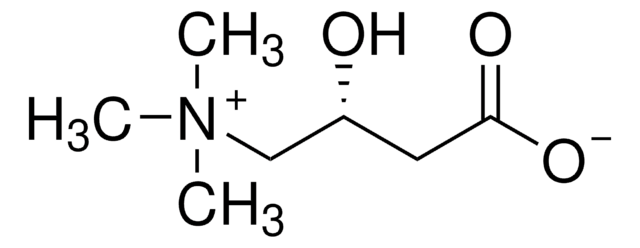Z0127
Zatebradine hydrochloride
≥98% (HPLC), powder
Sinonimo/i:
7,8-Dimethoxy-3-[3-[-N-[2-(3,4 dimethoxyphenyl)ethyl]-N-methylamino]propyl]-1,3,4,5-tetrahydro-2H-3-benzazepin-2-one hydrochloride, UL-FS49
About This Item
Prodotti consigliati
Livello qualitativo
Saggio
≥98% (HPLC)
Stato
powder
Condizioni di stoccaggio
desiccated
Colore
white
Solubilità
H2O: >10 mg/mL
Ideatore
Boehringer Ingelheim
Temperatura di conservazione
2-8°C
Stringa SMILE
Cl[H].COc1ccc(CCN(C)CCCN2CCc3cc(OC)c(OC)cc3CC2=O)cc1OC
InChI
1S/C26H36N2O5.ClH/c1-27(13-9-19-7-8-22(30-2)23(15-19)31-3)11-6-12-28-14-10-20-16-24(32-4)25(33-5)17-21(20)18-26(28)29;/h7-8,15-17H,6,9-14,18H2,1-5H3;1H
ZRNKXJHEQKMWCH-UHFFFAOYSA-N
Applicazioni
- as an If blocker to study its effects on cardiomyocyte clusters (CMCs)
- as a hyperpolarization-activated and cyclic nucleotide-gated (HCN) channel inhibitor to study its effects on viability of degenerating rod or cone photoreceptors in mice
- as a bradycardiac agent to study its effects on tachycardia and elevated temperature in fish
Azioni biochim/fisiol
Caratteristiche e vantaggi
Codice della classe di stoccaggio
11 - Combustible Solids
Classe di pericolosità dell'acqua (WGK)
WGK 3
Punto d’infiammabilità (°F)
Not applicable
Punto d’infiammabilità (°C)
Not applicable
Dispositivi di protezione individuale
Eyeshields, Gloves, type N95 (US)
Scegli una delle versioni più recenti:
Certificati d'analisi (COA)
Non trovi la versione di tuo interesse?
Se hai bisogno di una versione specifica, puoi cercare il certificato tramite il numero di lotto.
Possiedi già questo prodotto?
I documenti relativi ai prodotti acquistati recentemente sono disponibili nell’Archivio dei documenti.
Il team dei nostri ricercatori vanta grande esperienza in tutte le aree della ricerca quali Life Science, scienza dei materiali, sintesi chimica, cromatografia, discipline analitiche, ecc..
Contatta l'Assistenza Tecnica.








